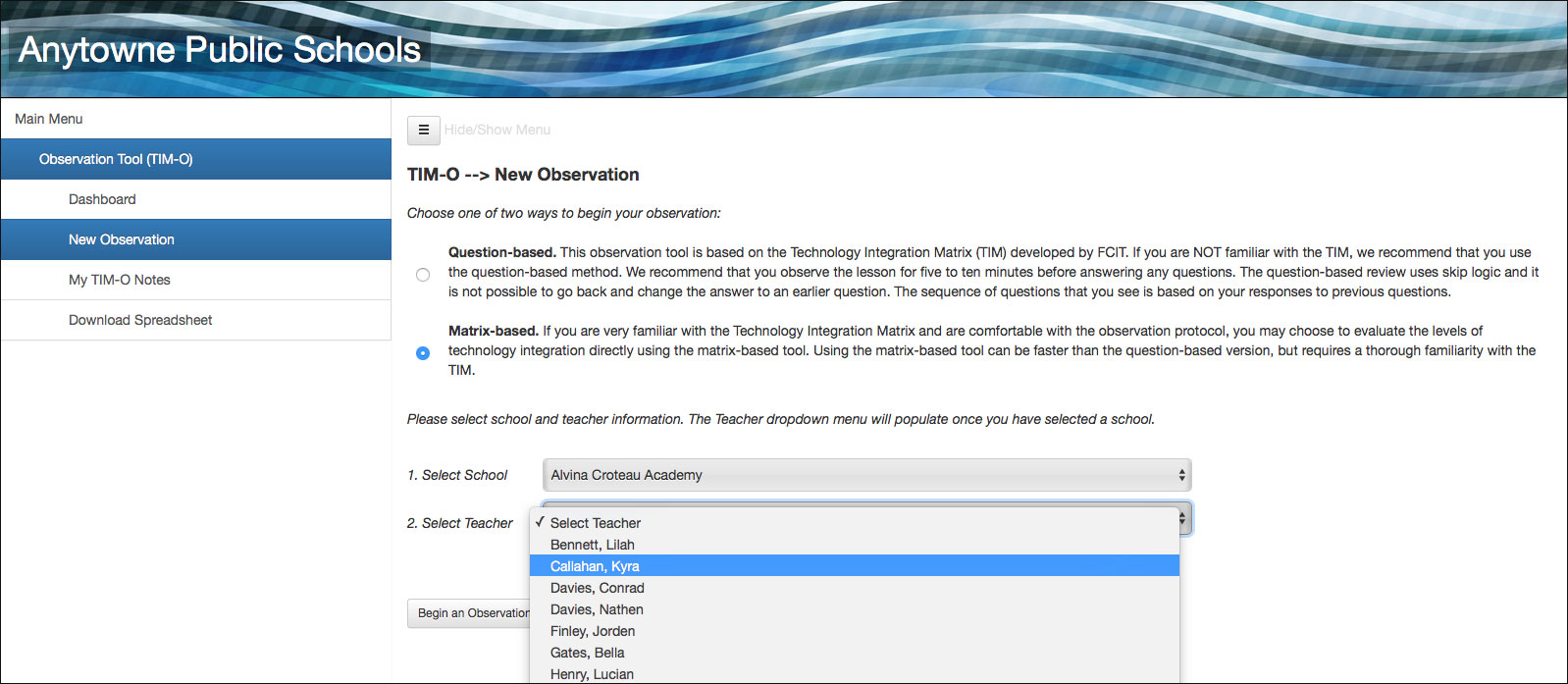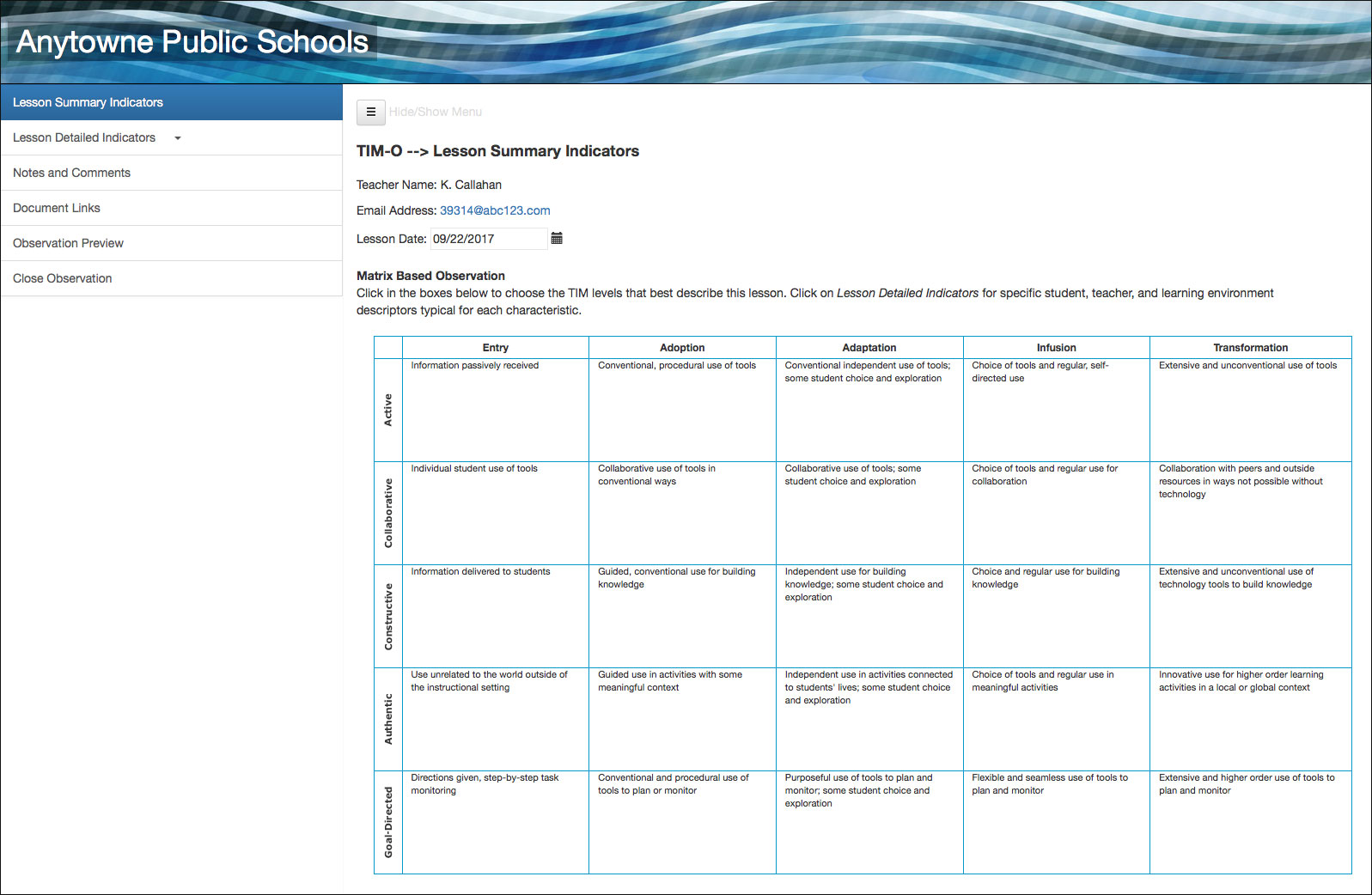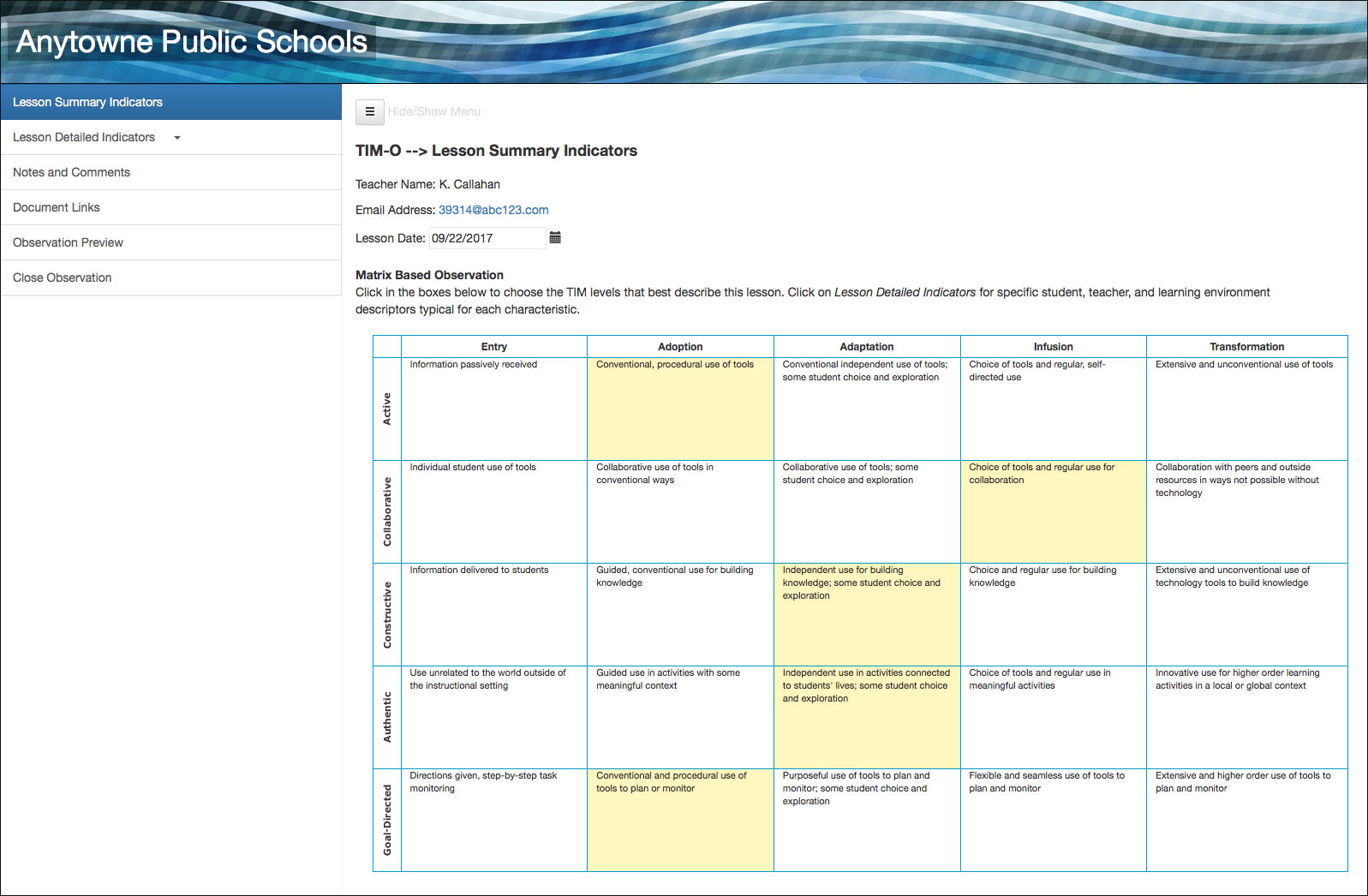Menu
1. TIM Tools Admin Center
The Admin Center provides for management of the TIM Tools suite of applications.
Overview
Getting Started
- Admin Center Access
- Admin Center Dashboard
- Managing Zones (for Districts)
- Managing Zones (for Regional Service Agencies)
- Managing Zones (for Education Ministries, Consultants, Grantors, and Others)
- Managing Schools
Customization
Managing Members
- Uploading and Updating Members
- Profile Screen
- Changing Passwords
- Defining Roles (for Districts)
- Defining Roles (for School Licensees)
- Defining Roles (for Education Ministries, RSAs, Consultants, Grantors, and Others)
Working with Data
- Participation Overview
- Downloading ARTI Data
- Downloading TIM-LP Data
- Downloading TIM-C Data
- Downloading TIM-O Data
- Downloading TIM-R Data
- Downloading TUPS Data
- Using TUPS, TIM-O, TIM-R, and TIM-LP Templates
2. TUPS
The Technology Uses and Perceptions Survey provides essential information for planning technology infrastructure and support and identifying the perceptions and PD needs of teachers.
- TUPS Intro
- Collection Frameworks
- TUPS Intro and Closing Text
- Customizing TUPS Sections and Items
- Accessing School or District TUPS Data
- TUPS Report Template
3. TIM-O / TIM-LP / TIM-R
These three tools are for classroom observation, lesson plan review, and teacher reflection.
Overview
Preparation
TIM-O
- TIM-O: Beginning an Observation
- TIM-O: Question-Based Method
- TIM-O: Matrix-Based Method
- TIM-O: Finishing an Observation
- TIM-O: Print or Share an Observation with a Teacher
- TIM-O: Editing Previous Observations
- TIM-O Report Templates
- Accessing School or District TIM-O Data
TIM-R
TIM-LP
4. TIM-C
The TIM-C allows a coach and client to document the goals, activities, progress, and outcomes of a coaching cycle.
5. ARTI
The ARTI tool provides a framework for teachers to design and conduct their own action research projects.
6. Report Tool
The Report Tool allows a school or district to create TIM-LP, TIM-O, TIM-R, or TUPS reports.
- Report Tool Intro
- Building a New Report
- View, Edit, or Delete Reports
- Interpreting TIM-O Report Data
7. Survey Tool
The Survey Tool allows a school or district to create internal or external surveys on new topics as needed.
- Survey Tool Intro
- Creating a New Internal Survey
- Creating a New Public Survey
- Adding Questions to Your Survey
- Customizing a Library Survey
- Viewing Survey Results
Need help?
Have a question?
Email us at TIM@fcit.us anytime. We want to help you get the most out of your TIM Tools account!
TIM Tools 7.5 Administration Guide
TIM-O: Matrix-Based Method
<<< See “TIM-O: Beginning an Observation” for the introduction to this tutorial.
To create a TIM lesson profile using the question-based method, check the second radio button for Matrix-based.
Select the school where you will be doing the observation. The dropdown Select School menu will present you with a list of all schools where you have been assigned as an observer.
Next, select the teacher’s name from the Select Teacher dropdown list. This list will be populated with every teacher at the selected school who has been entered into the TIM system.
Always keep in mind that the unit of observation in the TIM-O is the lesson, not the teacher. You are selecting the name of the teacher whose lesson your are about to observe.
 Figure 1. Selecting the teacher to observe after the school selection has been made.
Figure 1. Selecting the teacher to observe after the school selection has been made.
When you have made your selections for method, school, and teacher, click the Begin an Observation button. A blank Matrix of Summary Indicators will appear.
 Figure 2. The Technology Integration Matrix with no selections yet made.
Figure 2. The Technology Integration Matrix with no selections yet made.
After careful observation of the lesson, simply click within one box in each row to select the levels you observed for each of the five characteristics. Your choices will highlight and will be recorded in the system. You can change your selections as many times as you wish. Remember, you are determining your choices based on classroom activity that you can readily observe. It is a profile for that particular lesson, not a profile for the teacher. You may happen to know that the teacher whose lesson you are observing is capable of presenting a lesson at the Infusion level for Active Learning, but if the particular lesson you are observing is at the Entry level for Active Learning, then that is the cell you should check. As you select cells in the Matrix, the background will highlight as shown below.
 Figure 3. The cells will highlight as you make your selections.
Figure 3. The cells will highlight as you make your selections.
As you are determining the level for each of the characteristics, you may find that you need more information than is provided in the high-level summary the matrix view provides. In that case, select Lesson Detailed Indicators in the menu to reveal a sub-menu listing each of the five characteristics. Click any of the characteristics and you will see extended descriptors for the teacher, the student, and the setting at each level as shown below for the Active characteristic.
 Figure 4. Detailed indicators for the students, teacher, and setting will help you to select the most appropriate level for each characteristic.
Figure 4. Detailed indicators for the students, teacher, and setting will help you to select the most appropriate level for each characteristic.
The Lesson Detailed Indicators windows work just like the overall Matrix window. You can click in any cell to select it. You may go back and forth among the five indicators and change your selections as ofter as you would like. When you have made selections for each of the five characteristics, go back to the Lesson Summary Indicators to see all of your choices on one screen.
From this point forward, the process is the same to complete an observation using either the question-based or matrix-based method.
Tutorial continues with the page, “TIM-O: Finishing an Observation” >>>
